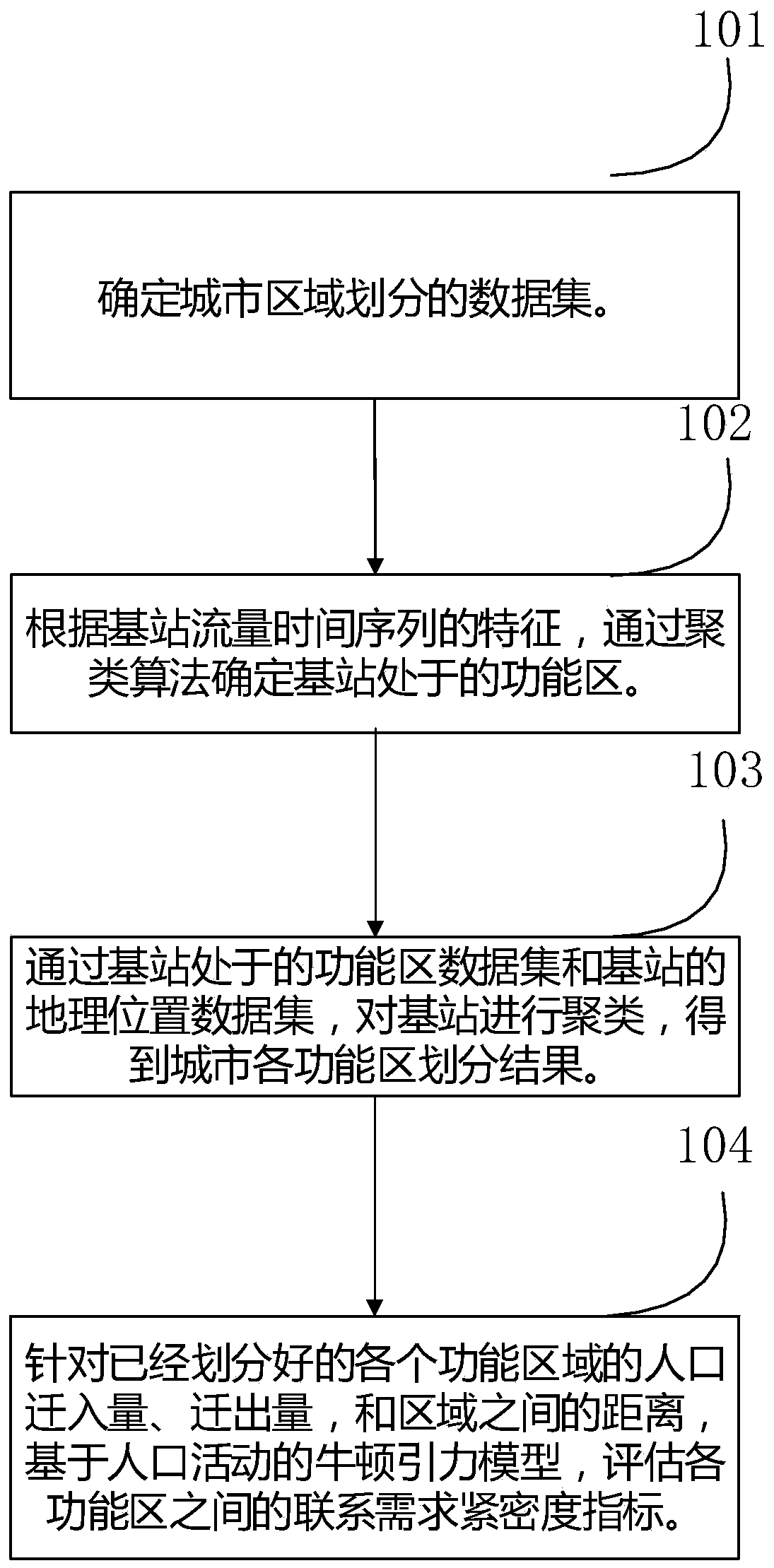Method and device for evaluating contact demand compactness among functional areas of city
A functional area and compactness technology, which is applied in the field of assessing the tightness of connection demand between various functional areas in a city, can solve the problem of insufficient consideration of the influencing factors of regional connections, and achieve the effect of improving regional economic development
- Summary
- Abstract
- Description
- Claims
- Application Information
AI Technical Summary
Problems solved by technology
Method used
Image
Examples
Embodiment 1
[0017] Embodiments of the present invention provide a method for assessing the degree of connection demand tightness between various functional areas of a city, please refer to figure 1 , including the following steps:
[0018] Step 101: Determine the data set for urban area division;
[0019] Step 102: According to the characteristics of the time series of base station traffic, determine the functional area where the base station is located through a clustering algorithm;
[0020] Step 103: Clustering the base stations through the functional area data set where the base station is located and the geographical location data set of the base station, to obtain the division results of each functional area in the city;
[0021] Step 104: Based on the Newtonian gravitational model of population activity for the population immigration, emigration, and distance between each divided functional area, evaluate the index of the connection demand density between each functional area.
...
Embodiment 2
[0094] Embodiments of the present invention provide a device for assessing the tightness of connection requirements between various functional areas of a city, please refer to Figure 6. The device includes a parameter set setting module 601 , a data set acquisition and preprocessing module 602 , a division model module 603 and a connection closeness calculation module 604 . The internal structure and connection relationship of the device will be further introduced below in conjunction with the working principle of the device.
[0095] Parameter set setting module 601, used to set the parameter set of the clustering algorithm;
[0096] The data set acquisition and preprocessing module 602 is used to obtain the base station traffic time series and preprocess it into a base station characteristic data set;
[0097] The division model module 603 is used to use the processed feature data set as an input and use a clustering algorithm to obtain a final division result.
[0098] ...
PUM
 Login to View More
Login to View More Abstract
Description
Claims
Application Information
 Login to View More
Login to View More - R&D
- Intellectual Property
- Life Sciences
- Materials
- Tech Scout
- Unparalleled Data Quality
- Higher Quality Content
- 60% Fewer Hallucinations
Browse by: Latest US Patents, China's latest patents, Technical Efficacy Thesaurus, Application Domain, Technology Topic, Popular Technical Reports.
© 2025 PatSnap. All rights reserved.Legal|Privacy policy|Modern Slavery Act Transparency Statement|Sitemap|About US| Contact US: help@patsnap.com



